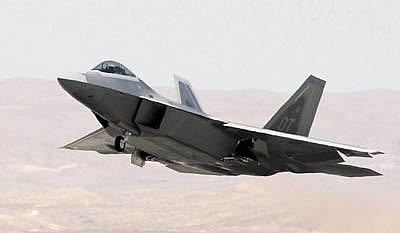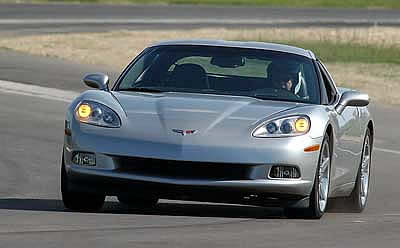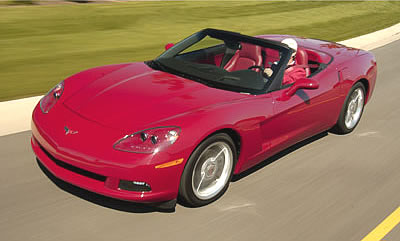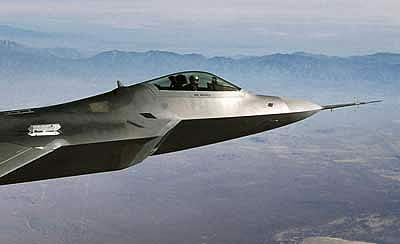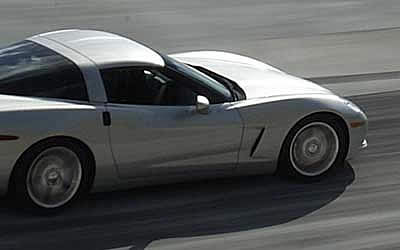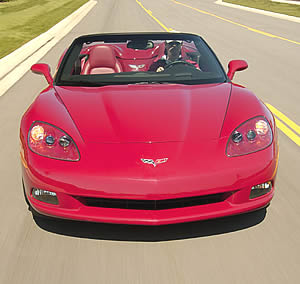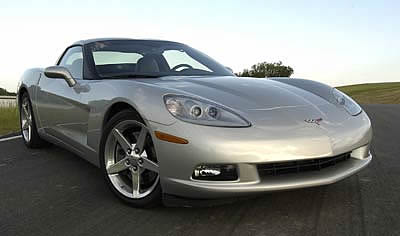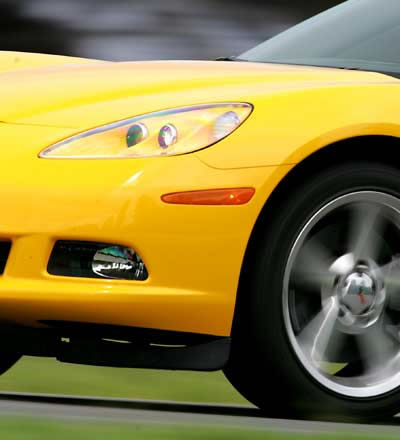C6, Naked and Exposed: Corvette Action Center's First Look at the 2005 Corvette - The Sequel: Finally, We Drive It! - Page 2 of 12
 |
 |
C6 Naked and Exposed - The Sequel: Finally...We Drive It!!! - Page 2 of 12
And, Talk to Some of the People who Built It
by Hib Halverson
Imagery by GM Communications, Richard Prince, U.S. Air Force and Sharkcom
©2005 Shark Communications
No use without permission
Corvette Action Center: You've said you and your team of designers were influenced by the Lockheed Martin F/A-22 Raptor fighter/attack aircraft. What about the Raptor intrigues you?
Tom Peters: Car designers are influenced by aircraft on a couple different levels. Aircraft represent the ultimate in high-performance vehicles. They're very form-follows-function. Astheticly, I think they portray where things are heading in the future. Corvettes have always been a sign of the times, not only culturally, but technologically and astheticly. The F/A-22 is, also, a sign of where technology is at this time.
One of my brothers works for NASA at Edwards Air Force Base (USAF Flight Test Center in the Southern California high desert) and I've been up there on occasion. We've seen the F/A-22, the B-2 and other advanced-technology aircraft.
Stealth aircraft, initially, were very angular, like the (F)117 (Nighthawk stealth fighter of Gulf War 1 and 2 fame). The F/A-22 is a further evolution of that technology. It's more refined, more sophisticated but every bit as purposeful. C6 is similar in that it's also more refined, more sophisticated, but still very purposeful.
The F/A-22 has a great combination of shear surfaces, hard-edged lines and more subtile, organic areas of surface development. The transistions from the shear surfaces into the organic forms are very intriguing, so I felt it was a good icon; a good source of inspiration for how we wanted to take the Corvette forward. I'm not saying we, literally, interpreted or extracted something from the plane and put it directly on the car. We attempted to capture the spirit or the essence of the Raptor.
Aircraft often embody form that follows function. The plane's purpose, design, all aspects of it, are very functional. They're meant to do a specific task. In the case of the F/A-22 bodyform, it's to: 1) fly very fast (the first, non-experimental aircraft to "supercruise" or fly faster than sound without afterburner) 2) incorporate stealth technology, 3) offer its pilot outstanding visibility and 4) carry its weapons internally.
The F/A-22 is awesome. Visually, it's very directional. It has a lot of tension. Everything's going forward. The canopy has a sports car like appearance. I especially wanted to see how that could influence the upper (the car's shape above the belt line) on the Corvette. Most intriguing is the airplane has this shear, linear quality, overall, but then, on closer inspection, you see these transistions into more organic shapes, like those that encase the engines.
They're all there for a purpose, surfaces developed to optimize aerodynamics and shroud whatever functional elements are underneath, for example, the landing gear, the jet engines and the pilot in the cockpit.
On the Corvette, we wanted a fresh, new asthetic sense. I wanted to equate the F/A-22's elements into how Corvette's hood and fender shapes transistion up and over and become the wheel forms. How the hood bulge covers the engine. I drew similarities; comparisons of F/A-22 to how C6's fenders cover its wheels and tires, how the hood covers its engine and how the upper encapsulates driver and passenger.
When I've shown images of the F/A-22 to my team, the production team or, in your case, media which is trying to understand what the inspiration was for the design; I think the metaphor is obvious.
CAC: I know what you're gonna say, but I need it in your words so...what element of the design generated the most debate?
TP: Oh, no doubt about it-Headlamps.
The pros, in keeping the hidden headlamps were: tradition. Hidden lights are engrained in the Corvette mystique. Conversely, fixed lights, for many practical reasons, were the right thing to do: less mass, less complexity, easier to manufacture, cheaper and, most importantly, better lighting for high-performance driving.
From a design standpoint, we didn't struggle with the fixed lamps, but we carefully considered them. How we justified them, from a pure design perspective, is that, yeah, today's car is usually identified as Corvette, in part, by the hidden lamps, but there have been exposed lamps in Corvette's history ('53-'62). Various Corvette concepts have had them. I worked on the Corvette Indy (1986 show car) and it had exposed headlamps. Also, part of Corvette's soul and character is its race heritage and Corvette race cars have had exposed lights for many years.
CAC: On race cars, that goes clear back to the late-'60s.
TP: Yep.
 |
 |
